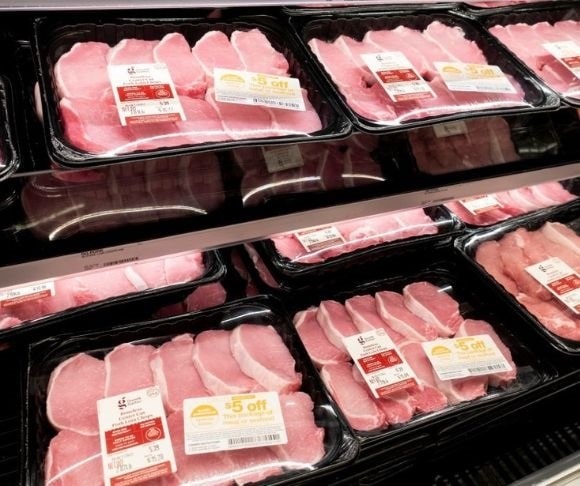Inflation relief is coming. Well, maybe not today, and maybe not tomorrow. But soon – when households have exhausted their pandemic-era savings accounts, Americans have lost their jobs, and the economy has slipped into a sharp recession or prolonged stagflation thanks to the Federal Reserve’s restrictive monetary policy efforts. Perhaps if Washington acknowledged the inflation threat, the public would not have to wait so long for policymakers to remedy the pain they caused in the first place.
Inflation Relief Coming Someday
 White House officials made the Sunday talk show circuit, and the main issue was – you guessed it! – inflation.
White House officials made the Sunday talk show circuit, and the main issue was – you guessed it! – inflation.
Council of Economic Advisers Chair Cecilia Rouse appeared on CNN to discuss President Joe Biden’s reaction to the hotter-than-expected September 8.2% annual inflation rate, which included a 13% spike in grocery store prices. Rouse acknowledged that food prices are a key component in Washington’s inflation challenge but noted that this is all Russian President Vladimir Putin’s fault since “he has weaponized natural gas” and “he’s weaponized energy.”
Rouse also revealed to the struggling cable news channel that Americans would not experience any positive effects of the Inflation Reduction Act until next year, alluding to various tax credits that go into effect in 2023. “For example, there are tax credits for energy to help people weatherize their homes and also bring down other forms of energy costs,” Rouse said. “We are focused on helping to make that transition to clean energy in a way that brings down energy costs for families.”
Council member Jared Bernstein told Fox News that it would “take time” to see the results of Build Back Better 2.0, the work at western ports, and the draining of the Strategic Petroleum Reserve (SPR). “It’s going to take time for those results to get into the price. Would like to see that happen a whole lot faster. We’re going to try to work to make that happen,” he averred.
Secretary of Transportation Pete Buttigieg explained in an interview with ABC and CBS that there is no certainty the US economy will slide into a recession, although the country has experienced back-to-back quarters of negative GDP growth. “And we’re doing everything we can to strengthen the foundations of the American economy,” he said. “And that means a lot on the supply side.” These comments came soon after Biden warned voters that inflation would rise again if Republicans regain control of Congress in November’s midterm elections.
Here’s the Deal
For nearly a year, the White House dismissed the idea that inflation would become a problem. Even months before Putin crossed into Ukraine, Biden insisted that inflation would fail to materialize or any bump in prices would be modest and then disappear. Earlier this year, Treasury Secretary Janet Yellen projected that elevated inflation would dissipate by the midterm contests. This was obviously mistaken, and now she is forecasting that the consumer price index (CPI) will significantly decrease next year. The administration’s official position is that inflation will fall to 2.8% by the end of 2023, which mirrors the central bank’s expectation for the personal consumption expenditure (PCE) price index.
Are these even reliable predictions? Washington’s track record has not been awe-inspiring since 2020.

(Photo by Scott Olson/Getty Images)
Moreover, since the Democrats injected the US economy with an enormous amount of stimulus, leading to an artificial increase in demand, the president’s landmark legislation will continue to leave more money in the economy through tax credits. It is crucial to have less money flowing through the economy – not more. The situation is comparable to the hilarious stimulus checks being handed out by Democrat- and Republican-led states across the country to fight higher prices.
Let’s concede that inflation does crater from 8.2% today to below 3% next year. What would be the contributing factor? The Fed’s quantitative tightening campaign? Did the Inflation Reduction Act defy all the negative analyses and conclusions that it would not achieve anything of substance? What about the broader market conditions? Will a recession eviscerate an elevated CPI amid declining demand? Remember, the root cause of the cost-of-living crisis was the Federal Reserve’s 40% increase in the money supply, followed by Biden and his predecessor approving trillions in COVID-related spending. So, perhaps the panacea would be reducing the money supply, emulating the federal funds rate from the 1980s, and cutting government spending.
Late to the Show
During the 2018 American League Division Series between the New York Yankees and Boston Red Sox, starting pitcher Luis Severino was late to toss his warmup pitches. The results were not pretty: six runs in three innings. This is similar to what is transpiring in the nation’s capital. From the White House to the Eccles Building, US officials arrived a year after the inflation-busting game should have commenced rather than taking proactive measures once the climate stabilized in the aftermath of the first wave of the coronavirus pandemic. The Fed could have started raising rates, Congress could have stopped spending so much money, and states could have reopened their economies earlier than what The Science™ overlords demanded. Unfortunately, welcome to the decade of stagflation.




